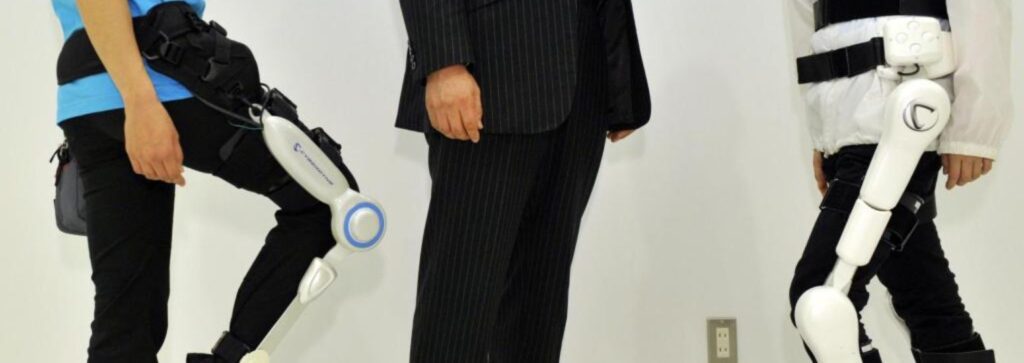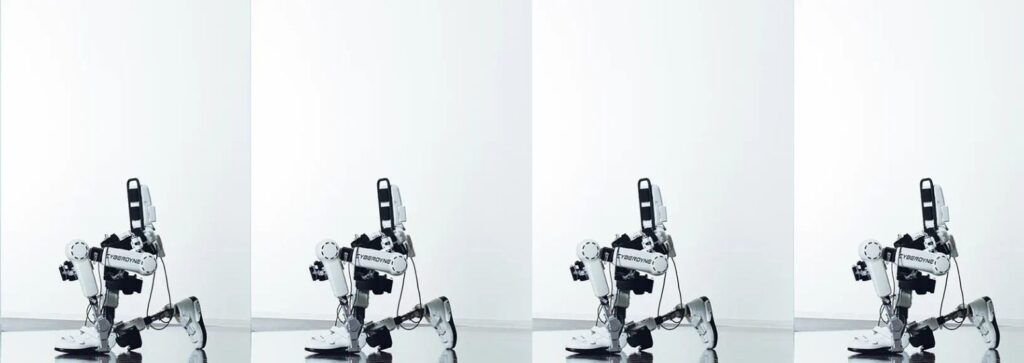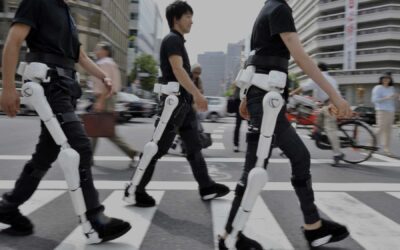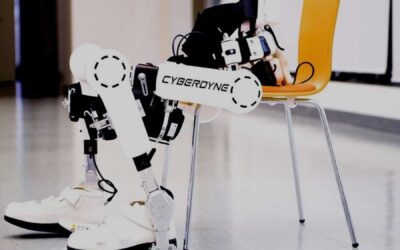Cyberdyne’s “Wearable Cyborg™ is a robot that uses Hybrid Assistive Limb – technology and is created to help people who have lost the use of their lower limbs and rediscover the joy of walking.
Our intention to move – triggers bio-electrical signals from the brain that communicate with the muscles that make locomotion possible. Such signals from paralysed patients may be too weak to trigger proper movement.
However, HAL can sensor faint BES that trickle onto the skin, process it, and simultaneously assist one’s desired movement with motors located on each hip and knee joint. More importantly, the brain receives feedback from the target muscle through the sensory system and learns how to move the legs correctly after repetition of dedicated HAL gait training.
HAL’s Principle in Cyberdyne Treatment

When a person tries to move, signals from the brain to the muscles trickle onto the skin’s surface as very faint bio-electrical signals. HAL can detect these signals and consolidate various information to complete the motion of patients. As a result, a neurological loop of afferent and efferent neurons is established between the brain and muscle through HAL.
HAL pattern
Send
The brain sends command signals. When a person tries to move their body, the brain transmits necessary signals through the nerves to the muscles.
Receive
The muscles receive the command signals. Each muscle contracts to move its corresponding joint when it receives the appropriate command signal sent from the brain through the nerves. With a spinal cord injury, this pathway is disrupted and the signal is too weak to generate sufficient force.
Read
The hybrid assistive limb then reads the signals. Signals sent to the muscles by the brain trickle onto the skin surface as very faint bio-electrical signals (BES). HAL can detect these signals and consolidate this information with other information collected by the device to recognise and complete the intended motion of patients.
Move
HAL moves as the wearer intends. HAL controls the power units at each joint independently based on these BES and allows the wearer to perform the desired movements with their voluntary commands.
Interpretation

Information of movement is sent back to the brain. When HAL- the Wearable Cyborg™ has appropriately assisted the intended movement, the feeling is fed back to the brain. As a result, a neurological loop of afferent and efferent neurons is established between the brain and the muscles through HAL.
The use of this network of signals to induce neuroplasticity is what we call “interactive biofeedback”. Active use of these neural pathways for voluntary movement with physical feedback to the brain leads to an improved ability for the wearer to walk on their own.
Rehabilitation-
The key to promoting functional improvement through Cyberdyne Treatment is not just transmitting voluntary command signals
Rehabilitation robots in physical therapy ensure that exercises are performed properly. They often help to support the patient’s body weight so that patients can participate for longer periods of time before tyring. They measure improvements and provide objective reporting and assessment.
For more on the treatment plans, log onto https://rehabmodalities.com/



